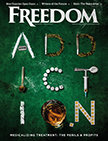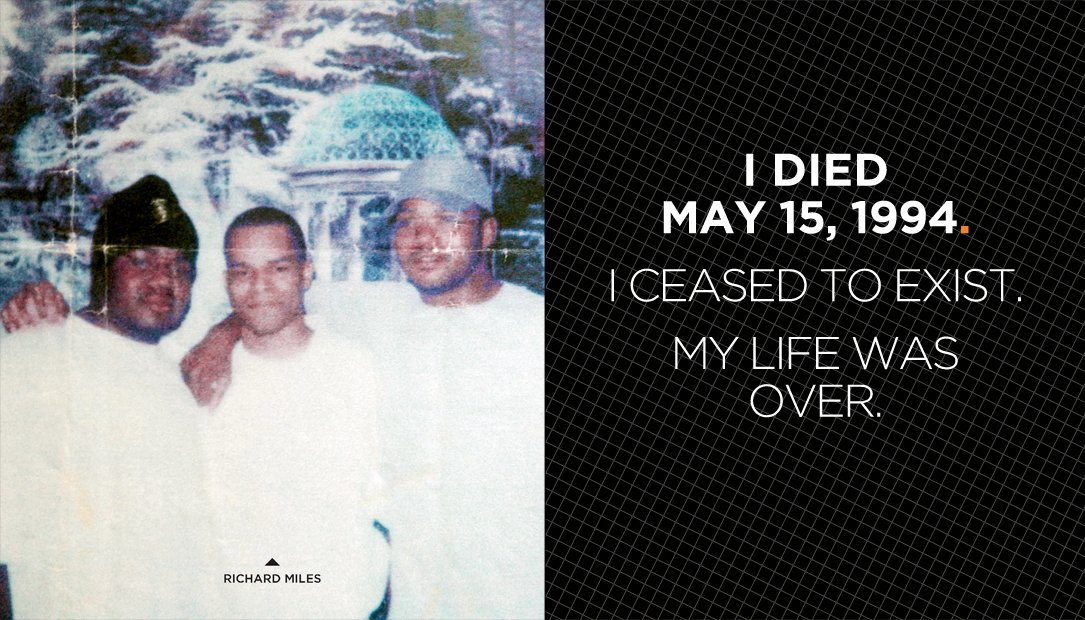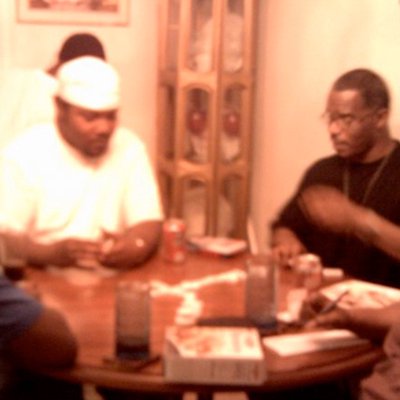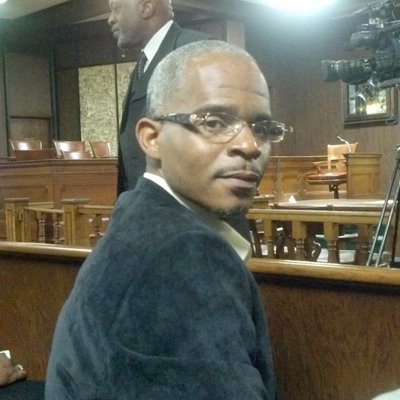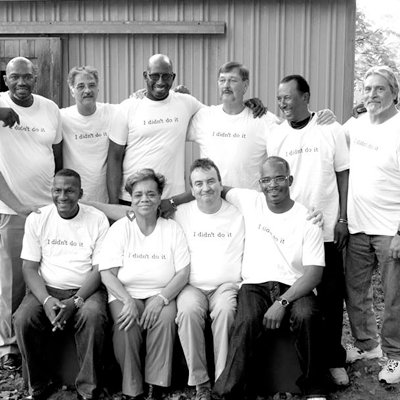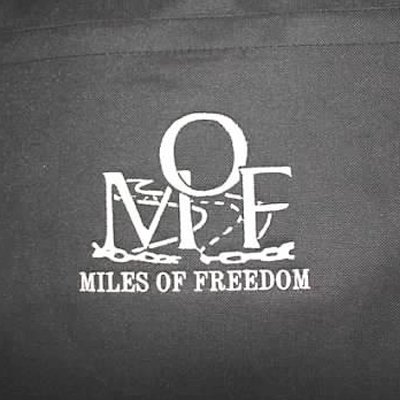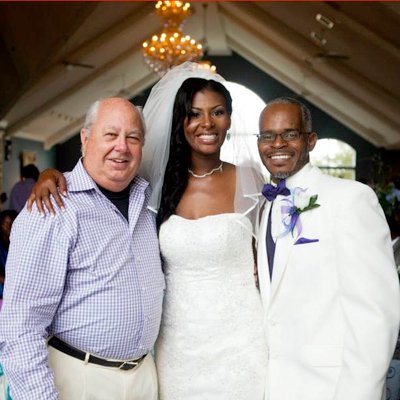Actual Innocence
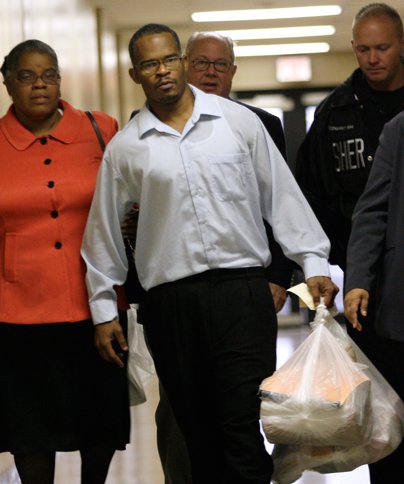
“Richard Miles became a commodity of the state of Texas, number 728716,” says Richard Miles.
“I’ll never know who Richard would have become.”
On that day more than 20 years ago, Miles was 19 years old and living in Dallas, Texas. He had a job at McDonalds, but much bigger plans—he was set to study plastics engineering at Texas State Technical Institute. On the night of May 15, 1994, Miles was at a friend’s house watching TV—along with another friend, and that friend’s girlfriend.
It got to be late—like 2 a.m. late—and Miles had to go. He was staying with a guy he knew on the other side of town, having moved out of his parents’ home a year before.
An hour after Miles left his friend’s house that night, one man was dead, another was wounded, and Miles was in handcuffs in the back of a police car.
Miles had gotten a ride from the friend he was visiting, and was dropped off near a pay phone. There, he called the house where he was staying and asked his host to turn off the alarm so he could get inside without making a middle-of-the-night racket.
As Miles hung up, he was arrested.
He was driven to a gas station and told to get on the ground. Then the police stood him up and wiped something on his hands. They put Miles back in the car, and drove him to an interrogation room.
A witness had just identified Miles as the tall, dark-skinned black man who, less than an hour earlier, had walked up to a parked car at a nearby gas station and shot the two men sitting inside with a gun held in his right hand.
A few months later, Miles—light-skinned, 5’9” tall, and left-handed—was convicted of these crimes and sentenced to 60 years in prison.
Ten years earlier and 1,300 miles away, in the wee hours of a morning in 1984, three men broke into the home of Charles “Squeaky” Jordan, a well-known Baltimore drug dealer.
The men handcuffed Jordan, his wife Linda and Jordan’s 18-year-old stepdaughter, Lisa Brown, and had all three lay down on the living room floor—where they were shot, execution style.
Jordan and his stepdaughter died. Somehow, Linda survived.
She later told police that three men—two black, one white—had broken in and shot her family. One of the two black men she knew—he was also a drug dealer. Linda could not identify the other two.
Police, as always, were under pressure to solve the crime. In trying to identify the white man, they targeted Chris Conover, 30. He had a record, and a history with drugs and addiction.
In high school, Conover was convicted of robbing a liquor store and served three years in prison. Five months after his release, he was arrested again—for heroin possession. He vowed then to be done with drugs, and soon he was. “I was just tired of living that way,” he says. “Prison is a warehouse. It’s abysmal.”
Because of Conover’s history with police, Linda Jordan was shown his picture in connection with the triple shooting and said he “resembled”the perpetrator. Later, after having seen the photo, Jordan picked Conover out of a lineup.
Conover proclaimed his innocence. “I had a criminal mind and didn’t think things through clearly in those days. But I never hurt anyone,” he said.
At his trial, several alibi witnesses testified that Conover was at a birthday party at the time the crime occurred. But prosecutors bolstered Jordan’s identification by presenting an expert witness from the FBI, who said that microscopic examination of hairs found on Lisa Brown’s pajamas came from a type consistent with Conover’s. In 1985, that was the highest standard of scientific evidence.
DNA profiling revolutionized law enforcement—proving suspects’ guilt by unmistakably placing them at crime scenes. used to reexamine evidence, it could also establish that a convicted person was not guilty of a crime.
Conover was convicted on charges of murder, attempted murder, and armed robbery. He returned to prison, sentenced to three life sentences, plus 80 years.
The following year, in 1986, Sir Alec Jeffreys at the University of Leicester in England discovered the DNA profiling technique, which matched hair, saliva and other bodily fluids not merely to a like-type but to a specific individual, and with 99.9 percent certainty.
It would revolutionize law enforcement. Scientists soon perfected DNA profiling and matching, and began using it as evidence in criminal cases—to prove suspects’ guilt by unmistakably placing them at crime scenes.
Two years later, in 1988, attorney Barry Scheck opened a criminal law clinic at the Benjamin N. Cardozo School of Law in New York City (in 1992 it would become The Innocence Project). Along with Centurion Ministries, a nonprofit prisoner advocacy group based in Princeton, New Jersey, Scheck began investigating whether evidence collected during past investigations could be retested using modern DNA analysis and therefore also establish that a person was not guilty of a crime.
Here was a chance for convicted prisoners professing their innocence. And, indeed, in the next quarter century, DNA evidence would exonerate at least 329 wrongly convicted prisoners nationwide—some sentenced to death.
But by the time DNA profiling was a common evidentiary tool in the mid 1990s, Richard Miles was locked away in a Texas prison, and Chris Conover was serving time in Maryland. The two men were total strangers then and forever, but linked by a common hope: that their DNA would set them free.
The first prisoner to be cleared by DNA evidence was David Vasquez, a high school janitor with an IQ of less than 70.
Vasquez served nearly five years for the murder of Carolyn Jean Hamm, a 32-year-old lawyer killed in her Arlington, Virginia, home. She was sexually assaulted, bound with a venetian blind cord, and hung—then cut down and left naked on the floor, on January 23, 1984.

Vasquez, who lived 30 miles away with his mother, became a suspect when the sister of Hamm’s neighbor told police that Vasquez, a guy she knew and described as “creepy,” had been seen in the neighborhood. (Her tip to police came after her own brother had been questioned twice as a suspect in the crime.) A few days later, police received another call claiming Vasquez had been seen in the neighborhood a couple of days after the body was found. Neither sighting was ever corroborated. Vasquez denied having been anywhere near the victim’s home, but was badgered by two detectives who lied to him about his fingerprints being found at the scene. “Maybe I might have gone there for a visit,” he eventually offered. When detectives asked how he got there, Vasquez answered, “I want to know. Because my mom was working and she can’t drive, and I don’t drive.”
For hours, the detectives confused Vasquez with specifics of the case—revealing unreleased details of the crime. Later, in another interrogation, before which he was not given a Miranda rights reading, Vasquez told police that since the first interrogation, he’d been having a dream that featured some of those details. Soon after, detectives brought Vasquez in a third time, had him sign a Miranda waiver, and told him to repeat the dream.
Police called it a confession.
Still, Vasquez’s blood type didn’t match the semen found at the crime scene, and none of his shoes matched a shoeprint left by the perpetrator. A forensic expert said that pubic hairs at the scene were consistent with Vasquez’s—albeit without empirical certainty.
Months later, with prosecutors moving forward, and unable to get his “confession” excluded, Vasquez’s lawyers warned him that the crime was so horrifying that a jury might convict him on limited evidence, and would almost certainly call for the death penalty. On this advice, and a day before the trial was set to commence, Vasquez entered an Alford plea (which does not admit guilt but concedes that prosecutors might have enough evidence to persuade a jury) and was sentenced to 35 years in prison.
A little less than three years later, in 1987, in the same Arlington neighborhood as Hamm’s, a strikingly similar crime occurred—the rape and strangulation of a 44-year-old woman in her home.
One of the two detectives who investigated Vasquez in 1984 was assigned the new case. He offered the theory that Vasquez had not acted alone in Hamm’s murder and that his accomplice was the perpetrator of the more recent crime. But when that detective and his new partner visited Vasquez in prison offering a significantly reduced sentence if he’d identify his “partner,” Vasquez continued to proclaim his innocence—and the new detective, Joe Horgas, began to wonder if Vasquez was telling the truth.
And worry that a serial killer might be on the loose.
“Have you ever had a dream, and held it, even when you didn’t think it would ever come true? I always dreamed about being able to get out and have a family.“
—Richard Miles
Further investigation uncovered that three other women in the area had been raped, bound and murdered in the weeks leading up to the 1987 crime, and that in the seven months before Hamm’s murder in 1984 at least 10 Virginia women had survived rapes by a slightly-built masked black man carrying a knife and nylon cording.
There had been no similar crimes in the interim, and Detective Horgas theorized that the person responsible had been incarcerated. He developed a profile of the type of person he felt might be responsible, and compared it against arrest records. One man, Timothy Spencer, fit the profile and had been arrested for burglary on January 29, 1984—six days after Hamm was murdered. Then, two weeks after Spencer was released to a halfway house in September 1987, a 35-year-old Richmond, Virginia, woman was assaulted, murdered and left naked in her apartment.
Horgas soon learned that Spencer had been signed out of the halfway house the night of that crime—and at the time of both other 1987 murders.
Detective Horgas was aware of the new investigative tool, DNA profiling. Timothy Spencer presumably was not—he volunteered a DNA sample, which led to his conviction in four homicides—making him the first criminal convicted of murder based on DNA testing in the United States. Spencer was put to death by the Commonwealth of Virginia in 1994.
While the manner of attack in the four 1987 murders was obviously consistent with the attack on Carolyn Jean Hamm, and an FBI report concluded that Hamm’s death was perpetrated by the same person as the later killings, the DNA evidence collected at the time of Hamm’s death was not sufficient to conclusively prove Spencer was her killer. Nor could it clear Vasquez.
But the prosecution and defense joined in a request for a pardon from Virginia’s governor, which was granted January 4, 1989. Vasquez was released from prison that same day—six months after Timothy Spencer’s conviction.
A year later, the Commonwealth of Virginia officially exonerated Vasquez and compensated him with $117,000, $65.14 for each day he spent in prison.
The common belief is that the vast majority of police officers and prosecutors do their jobs honestly and competently, and that nearly all convicted criminals serving sentences in U.S. state and federal prisons deserve to be there—need to be there—as punishment for their crimes, and to safeguard the rest of us.
But the vast majority does not mean all.
Last year, 125 prisoners were exonerated nationwide. Released from prison, with the government officially declaring they did not in fact commit the crimes that landed them behind bars. Six prisoners cleared in 2014 were on Death Row, having served more than 30 years each for crimes they didn’t do.
Since the genesis of The Innocence Project in 1988, more than 1,550 prisoners have been acquitted in total—more than 100 of them from Death Row—after an average of 13 years behind bars (though some lingered much longer).
Freed. Cleared.
And then what?
There are 21 states that have no legislation mandating any type of compensation for citizens who were wrongfully imprisoned. In the states that do compensate, there’s a wide range of what is awarded, and for what reasons. It can be anything from barely minimum wage for the years lost, to millions of dollars. Some states have a maximum per year, and an overall cap. New York, Illinois and Texas—which rank near the top in number of exonerations, also tend to compensate at the highest levels.
But whatever the amount, it usually isn’t paid the day the prisoner is released. Even when the state agrees to vacate the conviction, before a released prisoner is eligible for compensation, in most states, the case has to be officially discharged—which requires either a judge’s order, or the request and cooperation of the prosecutor’s office that handled the case. And in some states, if the cleared person pled guilty—even if the basis of the plea was a coerced confession or incompetent legal advice—he or she is not eligible for compensation.
Those who are eligible, in most cases, must submit an official request to a committee or panel charged with applying that particular state’s compensation law and/or formula—or with coming up with an arbitrary figure.
“If you’re guilty of a crime, you get more support from the state when you’re released than if you’re innocent,” says Keith Finley of the Wisconsin Innocence Project.
For their fortune, released prisoners rely on the goodwill of friends and family, and pray for any prospective employer’s willingness to take a chance. Imagine applying for a job with a 10, 20 or 30-year gap on your resumé, with the explanation that you had been in prison “wrongfully.”
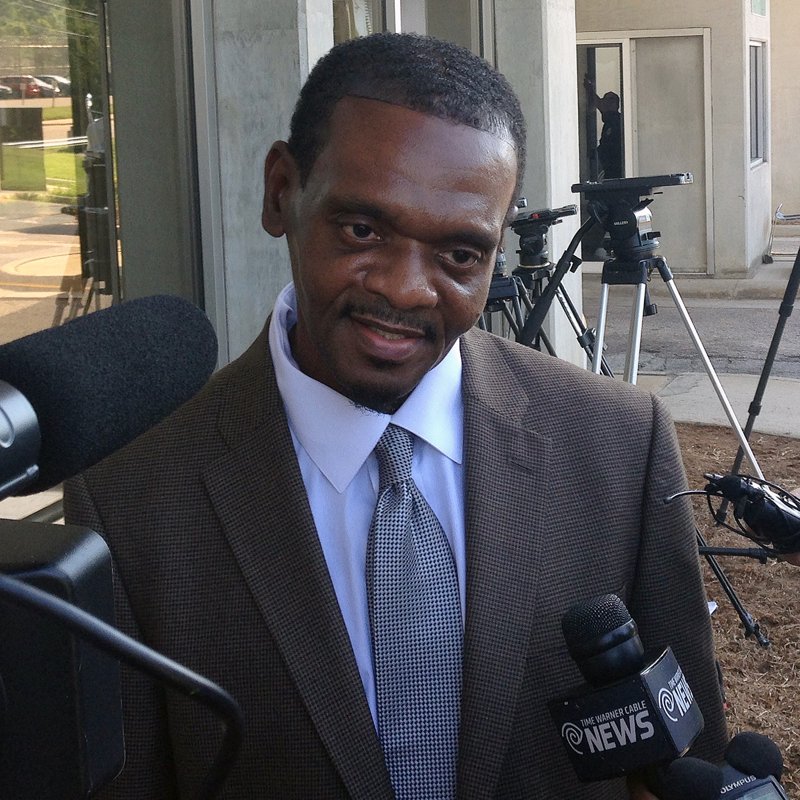

Henry McCullom, 50, and Leon Brown, 47, don’t have to imagine. Half-brothers and described as mentally challenged, they were released in September 2014 after serving 31 years on North Carolina’s Death Row for the rape and murder of an 11-year-old girl, after a new examination of DNA evidence clearly implicated another man, who is currently serving time for a similar crime. A judge ruled that “no physical evidence, either at the time of their arrest or at any time since” linked the brothers to the crime, which the judge says was prosecuted “almost entirely” on inconsistent witness testimony and quickly recanted.
McCullom and Brown have been living on friends’ generosity—and family members’ couches—since their release seven months ago, when prison officials gave them $49 each.
Neither McCullom nor Brown has applied for a job yet, because they’re waiting for their official pardon. Once that comes, they’ll also be eligible for the state’s maximum compensation: $750,000 apiece. Their official request, supported by the state’s current district attorney, has been in the governor’s hands for months, held up in part because of a lengthy review process. It’s also due to opposition from the prior district attorney who prosecuted their cases and takes pride in his nickname: the nation’s “deadliest D.A.,” for his ability to win death sentences.
Though the governor’s review process has no certain timetable, a local bank recently gave the men a large enough loan to allow them to rent a home of their own.
How much does it take to recompense not only the loss of years, but the injustice and pain of being deemed responsible for the death of another person? What if that person was your own child?
In May of 2005, Nicole Harris, 23, a recent college graduate with a degree in psychology and a job in a nursing home, was across the street from her Chicago apartment doing laundry while her children, 4‑year-old Jaquari and 6-year-old Diante, played quietly in their bedroom. Harris was disciplining her two boys for going outside by themselves, and had sent them to their room.
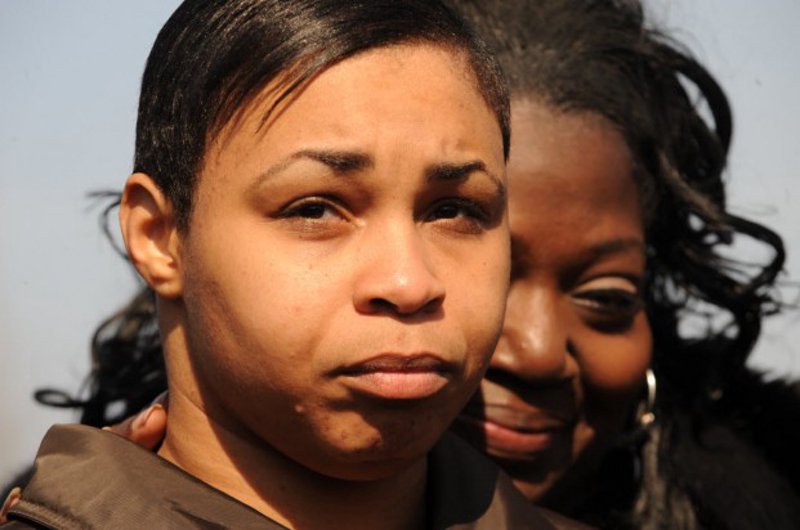
Jaquari liked to pretend to be Spiderman and often wore a sheet as a cape. Diante had seen his little brother play this game many times before, but this time he fell asleep. Somehow, during his game Jaquari wrapped the elastic band that had ripped loose from the hem of a fitted sheet around his neck, accidentally strangling himself in the boys’ shared bedroom. When Harris and the boys’ father returned, the panicked mother desperately tried to resuscitate the 4-year-old, but it was too late.
According to police, Harris put the cord around her son’s neck while disciplining the child, then left him and his brother alone.
Devastated by the death of her baby boy, Harris was questioned for 27 hours by detectives—who accused her of strangling her son with a telephone cord. She would later say she was denied food, water and use of the bathroom, and that she was pushed and called names by police. Eventually, Harris told investigators she had strangled her son with a phone cord. When they turned on a camera to record her confession, she said she had strangled Jaquari with an elastic band—and then immediately recanted.
Trial & Error
One reason for the increase in exonerations in recent years is the establishment of Conviction Integrity Units (CIUs), also known as Conviction Review Units or Post‐Conviction Review Sections, in district attorney’s offices around the country. The first CIUs were established in Texas (in Dallas County in 2007 and in Harris County in 2008) and are cropping up in jurisdictions across the country.
“I think there’s been a bit of a shift,” says Paul Cates of the New York Innocence Project. “People now recognize that the system makes more mistakes than it was originally assumed. And if they’re looking at the work of their predecessors, trying to correct mistakes, it’s admirable.”
While conceding the effort is noble, many criminal defense attorneys say inconsistency in criteria for reevaluating cases can present roadblocks. Most CIUs hold as their standard whether there is clear and convincing evidence for a plausible claim of actual innocence. Others will review a case if a post‐conviction investigation uncovers gross violations of a defendant’s constitutional rights.
And there are loopholes: The CIU in Manhattan, for example, won’t reinvestigate a case if a defendant knew or should have known the basis for his current claim—a standard that can punish defendants for the failure of prosecutors to turn over exculpatory material. Other CIUs won’t look at cases in which a defendant pled guilty, despite research that shows that coerced or false confessions are a common cause of wrongful convictions.
There’s also no uniformity in how CIUs are structured, and they operate with varying levels of transparency. For example, while the Dallas CIU (headed by a former defense attorney) conducts its reviews collaboratively with representation for the defense, the CIU in Manhattan (run by a prosecutor) conducts its post‐conviction investigations internally—highlighting, some say, the inherent problem with a CIU inside a DA’s office and staffed by prosecutors with a bias to look for evidence that supports earlier convictions.
Still, there’s no doubt that CIUs have been instrumental in righting some very serious wrongs. According to the National Registry of Exonerations, of the 125 exonerations in 2014, more than 70 were the work of CIUs.
The county medical examiner had already declared Jaquari’s death accidental, but after hearing Harris’ confession, changed it to homicide. The young mother was subsequently charged with first-degree murder.
Because Harris’ other son Diante—whose testimony would have exculpated his mother—believed in Santa Claus and the Tooth Fairy, a Cook County judge rendered him unfit to testify. And although experts testified that her false confession was clearly coerced, Harris was found guilty of murdering her son and sentenced to 30 years in prison. Seven years later, in October 2012, the U.S. Court of Appeals for the Seventh Circuit reversed Harris’ conviction, holding that the exclusion of Diante’s exculpatory testimony had been “arbitrary and disproportionate to the truth-seeking and reliability concerns advanced by witness competency restrictions.” Harris was released from prison in February 2013.
Prosecutors sought review of the case by the U.S. Supreme Court; it declined. On January 23, 2014, another Cook County judge fully exonerated Harris, qualifying her for compensation under the Illinois Court of Claims Act. No award has yet been granted.
Harris’ case is, sadly, not that unusual among female exonorees. Northwestern Law School’s Bluhm Legal Clinic’s Center on Wrongful Convictions estimates that 64 percent of the women exonerated were imprisoned when no crime had actually occurred. Examples include Shaken Baby Syndrome cases where the last person to care for the child, often a babysitter or caregiver, is held responsible for injury or death related to trauma inflicted at an earlier time by another person; and false sexual or physical abuse charges against a child that are never corroborated. The Center also claims “forty percent of female exonorees were victims of police or prosecutorial misconduct.”
Not everyone whose conviction is overturned is exonerated, nor given compensation. And not everyone who is released from prison is ever made whole again.
In 2001, DNA testing worked in favor of Chris Conover. The Innocence Project pushed for DNA testing that proved conclusively that the hairs the FBI expert had described as coming from Conover in the 1984 Baltimore murders of “Squeaky” Jordan and his stepdaughter came from two different white men, neither of whom was Conover.
That was enough to get the prosecutor to ultimately agree to Conover’s release from prison, but with prejudice. The Maryland prosecutor was still convinced they had the right man and held onto their right to retry Conover. “Mrs. Jordan identified Chris Conover,” Baltimore County Assistant State’s Attorney Frank Meyer would say. “In no way are we saying … that he was not involved in this horrible crime. Far from it. We have other evidence that links Chris Conover to the crime—plenty of it.”
The case dragged on.
By 2003, Conover, who had always professed his innocence, had an ailing mother, Diana, who never stopped supporting him. He didn’t want to put his family and friends—or himself—through the agony of another trial. If the prosecutors retried him, he knew he was facing at least another year in county jail, waiting.
At his attorney’s suggestion, Conover agreed to an Alford plea, and was released after 18 years in prison. But despite requests from The Innocence Project, prosecutors denied a request to have the original evidence run through the state’s DNA database, which might have found another suspect. They also refused a request to have Conover exonerated.
After his release, Conover went back to his hometown, moved in with his mother, and later married his high school sweetheart who had stood by and waited for him all those years. He told The Baltimore Sun that he just wanted to be “a regular old person.“
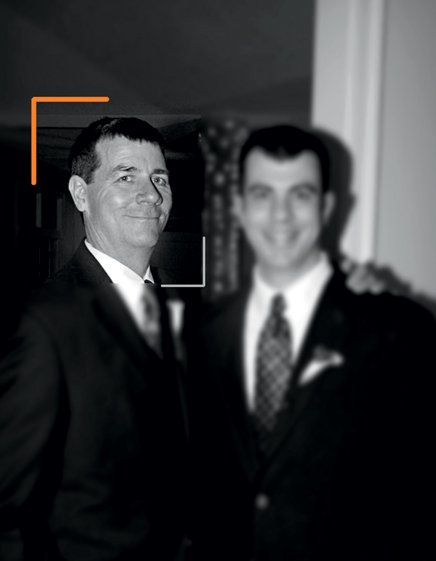
A few years later, Conover and his wife moved to North Carolina to start a new life—a regular life. They opened a pet care business together, but the economic downturn of the late 2000s hurt them—and Chris was still understandably impacted by the 18 years he spent in prison. He was frequently depressed, and suffered from panic attacks.
The Innocence Project again applied for Conover’s exoneration in 2012, which was again denied. His depression and anxiety worsened. Last year, Conover’s wife urged him to get in-patient treatment, but he refused, saying he couldn’t handle being locked up again. In February 2015, Chris Conover took his own life.
Kirk Bloodsworth, the first Maryland Death Row inmate to be cleared using DNA evidence, knew Conover from prison. He attended Chris’ memorial service, and said he hopes for a posthumous pardon for his friend.
It’s not that unusual for men who knew each other as prisoners to befriend one another on the outside—especially those who have in common that they shouldn’t have been incarcerated in the first place.
Today, Richard Miles—who didn’t shoot two men in the parking lot of a gas station in Dallas on May 15, 1994—has a lot of friends who are exonorees. (And just as many who rightfully served time.) Miles has made it his business to know them. And to help them—because without the help he received, Miles might still be rotting in prison.
“When I was 19, all I had was 60 years and a bunk,” he says.
Still, he was determined to make it. “One of the first things I did was get enrolled in college,” Miles says. While in prison, he earned his Associates Degree in Applied Sciences, and lobbied hard to get the best prison jobs. “I worked in the infirmary,” Miles says. “I worked around a lot of doctors and nurses. I could talk to ‘free world’ people. That’s what kept me sane. I was able to look outside while I was still inside.”
Miles also worked on trying to get out, becoming not only a student of law and procedure, but of the prison system. “First prison was established in 1848, set up for horse thieving. Now there’s 114 prisons,” he says matter-of-factly.
In his effort to get out, Miles spent a lot of time in the prison law library. “In the county jail, before trials and being incarcerated, everybody is innocent,” Miles observes. “But if you’re in prison and you meet people in the law library, [often] I would say they’re innocent. A guilty person is just going to do their time and hope they get a reduction.”
“I was in Coffield Unit, the biggest in Texas, with 5,000 men. I know 10 to 15 that I believe or feel are probably innocent.”
Miles knew for sure that he was innocent. He knew he had witnesses who said he wasn’t the shooter—and he knew the police knew it too. The night he was arrested, he had given the detective the name of the friend he visited, his friend’s mother, his friend’s girlfriend, and the guy he was staying with—all of whom could corroborate Miles’ whereabouts.
“He came back in the room after two hours and said, ‘Richard, your alibis all check out. But I have a witness that says he saw you kill someone,’” Miles recalls. “And that’s the first time I knew what the charge was.”
By the time his case got to trial, Miles said that between his friends and other people at the gas station, there were 10 witnesses to the crime—nine of whom said he wasn’t the shooter. Police also found fingerprints on the victim’s car that didn’t match those of Miles.
“But that one [person] said I was the shooter,” Miles says. “Even to this day, I’ve never shot a gun in my life.”
His friends and family always believed him. His father, a preacher, was always quoting to Miles: “The truth shall set you free.”
“And I said, ’Well someone needs to change their philosophies, because I’m telling the truth, and I’m not free!’”
Miles filed papers and wrote to talk shows, to the NAACP and “to every college that dealt with criminal justice cases,” he recalls. Miles also wrote to Centurion Ministries, the Princeton, New Jersey-based group that works with convicts it feels are wrongfully imprisoned.
They turned down his case.
“Honestly, when I turned 30, I had been locked up 11 years,” says Miles. “At that point, I knew that God, my mom and my dad knew I was innocent. But I guess you kind of get settled in. I did give up.”
What he didn’t know was that Centurion Ministries “likes to work with people who’ve been in prison 10 years or more,” Miles says, so they can know what type of character an individual has. That’s why they hadn’t taken his case.
And then in 2007 …
“All of a sudden I found out Centurion was getting my transcripts from the City of Dallas police department. [Centurion] tells me they’re taking me on.”
Among the things Centurion found in their investigation was that the police had failed to turn over to Miles’ lawyers two reports that implicated other men as the shooter. In September 2009, Centurion filed a state writ of habeas corpus. Two weeks later, prosecutors agreed to support the motion. A week after that, Miles was released after 15 years in prison.
Not everyone whose conviction is overturned is exonerated, nor given compensation. And not everyone who is released from prison is ever made whole again.
Within the year, the lone witness who had identified Miles testified that the prosecution coached him; Miles passed a polygraph test; and the police admitted the fingerprint and gunshot residue testimony they offered against Miles had been false.
In 2012, the Texas Court of Criminal Appeals found Miles “actually innocent,” and awarded him more than $1.2 million in compensation.
When the first check came from the state in April 2012, “the first thing I did was I paid my tithe,” says Miles, a preacher’s son. “Then I bought my mom a house. I bought me a house, and we started Miles of Freedom with a $150,000 investment in June of 2012.”
Miles’ eponymous nonprofit helps newly released prisoners—innocent or guilty—transition back into free society.
“Miles of Freedom birthed first and foremost from 15 years of being in prison, and what you come out with—the lack of education, the lack of social skills, and just not knowing what to do,” Miles says. “It’s really crucial to have a system, and support.”
Miles of Freedom offers transition help in the form of counseling, functional workshops, education, housing and employment. Already the charity has helped hundreds of former prisoners. “When one person is locked up, multiple factors are affected—the individual, his family, the community. And if you’re not dealing with all of the factors, then you’re not really dealing with reentry,” Miles says.
Miles, who also speaks to high schools, church groups and to anyone who’ll hear his story, knows that rough terrain. Released from prison in 2009, his financial settlement didn’t come for nearly three years. In the interim, he went on job interviews carrying newspaper clippings about his case, trying to convince someone to hire him. Finally, a friend persuaded a food and beverage manager at a local hotel to give Miles a chance.
“Whew, when I got that job … let’s just say I was the happiest hotel worker the Hilton Garden Inn ever had,” he laughs.
As part of adjusting to normal life after 15 years locked away from it—cell phones, Facebook, flat screen TVs were all entirely new—Miles also struggled with … dating. “Prison consolidates and compresses your feelings,” he says. “You have to learn again how to talk to a woman.”
His self-schooling in that area was put to the test one day in 2012, when he noticed an attractive woman at a car wash. “I’m feeling good, I’m looking good, I got a couple of dollars in my pocket,” he laughs. “But I didn’t know what to say.”
He went with: ”Is that a new Cadillac?”
It worked. Miles married Latoya—the girl from the car wash—on September 15, 2013. Fifteen, he says, is his lucky number.
“I got locked up May 15, I did 15 years, and I was exonerated February 15. We got married on the 15th and my first child was born in 2015,” says Miles. Raelyn Grace Miles—the daughter he calls Amazing Grace—was born March 6.
“Have you ever had a dream, and held it, even when you didn’t think it would ever come true?” he asks. “I always dreamed about being able to get out and have a family.”
Miles, who turns 40 this month, laughs. “This isn’t a new chapter, this is a whole new volume.”
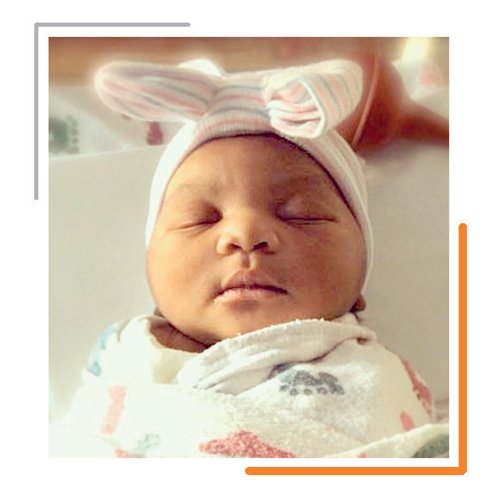
Staff writer Michael Brennan is a reporter, writer and essayist. While at the Orlando Sentinel, he was nominated for the Pulitzer Prize in news reporting for his coverage of a KKK rally.

